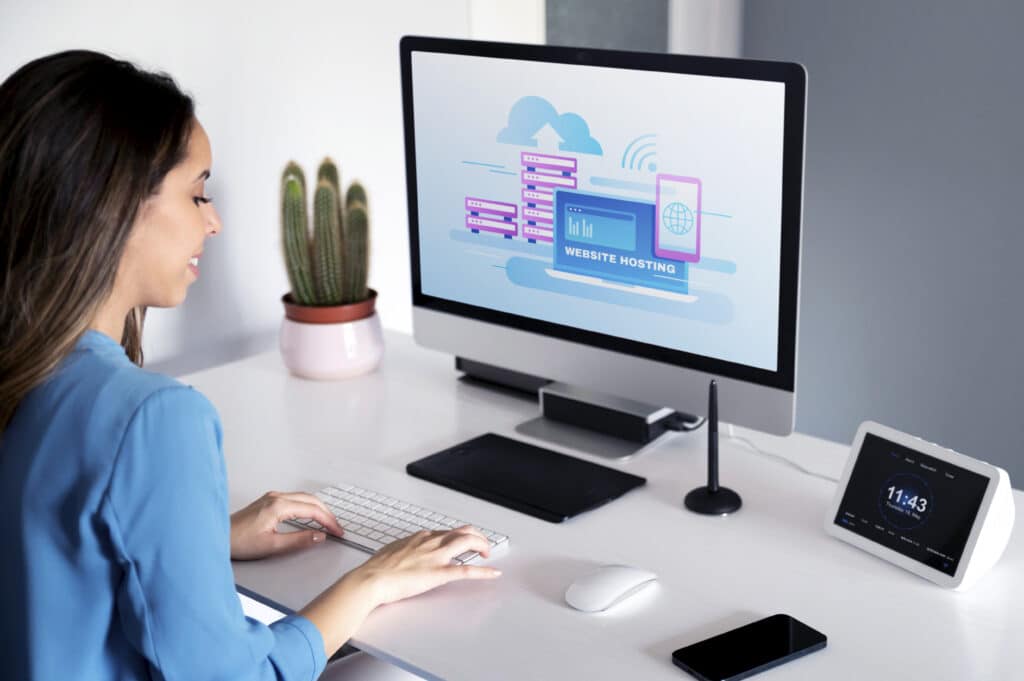Electronic invoicing and EDI in SaaS mode
13 June 2023
13 June 2023

In the enterprise software market, since the health crisis of 2020, SaaS has become the leading software usage mode. According to the annual report published by Numeum and Ernst & Young, over 75% of companies that have adopted paperless invoicing are already using SaaS solutions.
The future of business is digital. So, to ensure their digital transformation, infrastructure is at the heart of their concerns.
This raises a number of questions. Should you :
Ultimately, there are a number of criteria to consider when making your choice. These include internal resources, cost control and ease of deployment. But they also include data security, as well as the level of customization, scalability and flexibility to suit the company’s activity.
In this article, let’s find out why choosing a SaaS solution is ultimately the right choice for business-to-business exchanges, EDI and invoice dematerialization ?

SaaS, or “Software as a Service”, allows companies to subscribe to software remotely, rather than purchasing and installing it on their own hardware.
Software and data are hosted in datacenters. First and foremost, users need an Internet connection to log on. Pricing can take the form of a monthly or annual subscription, and can depend on a number of metrics, such as :
Software updates and maintenance are carried out by the service provider. These costs are included in the SaaS subscription.
It should be emphasized that when signing up with a SaaS provider, the company must first check two essential points : the level of SLA and the SaaS host’s commitments under the RGPD.
The SLA or “Service Level Agreement” is the agreement between the SaaS provider and the company that expressly defines the level of service the company expects from the supplier.
It includes measurement parameters and penalties if the service level is not reached. Specifically, these include :
SaaS service providers generally publish statistics on a portal to enable customers to check the SLA.
When choosing a SaaS solution, the company’s data is hosted by the service provider. It is therefore up to the company to ensure that the conditions of the RGDP are respected, particularly when personal data is involved :
To take things a step further, the CNIL has published recommendations for companies using cloud services.
At a time when the digital sector is responsible for 3.7% of greenhouse gas emissions (according to the report by the Mission d’information sur l’empreinte environnementale du numérique), SaaS solutions and software enable companies to carry out their digital transformation while controlling their carbon footprint. Why is this so ?
Above all, to :
Data center operators, unlike enterprises, can easily negotiate with electricity suppliers to supply themselves exclusively with electricity generated from renewable energies.
As a result, they can reduce the carbon footprint of their datacenters. The GAFAs (Google, Apple, Facebook and Amazon) have their own sources of electricity, generated either by wind or solar power. Numerous solutions have already been deployed to recycle the heat generated by datacenters: district heating, the Val d’Europe aquatic center, etc.
By being accessible from anywhere, at any time, SaaS software facilitates the transition to “flex office” in companies. Flex office” means not assigning a fixed workstation to an employee. This optimizes office occupancy and reduces lighting, air-conditioning and heating costs.
According to ADEME studies on the environmental impact of telecommuting, commuting distances are reduced by 65% and distances covered by 35%.
And last but not least, SaaS software solutions are always accessible, whether in a meeting, on the move or at home, to consult or share a report or accounting statement, making printing unnecessary. A simple network connection is all you need to access a document or share notes.
EDI is the dematerialization of the administrative tasks involved in commercial exchanges, from order to invoice. Customer and supplier information systems exchange data directly via standardized electronic messages.
The dematerialization of invoices encompasses their electronic transmission and reception. These are referred to as issued invoices.
The company must always be in a position to take a new order, deliver and invoice within short deadlines and at known, controlled management costs. What’s more, the company must comply with all applicable regulations.
In conclusion, every invoice :
SaaS solutions require no in-house hardware or software installation, and are immediately available to :
When you sign up for a SaaS contract, you’ll know the annual cost of the solution, and how rates will change according to the volume of EDI messages and invoices transmitted and received.
SaaS solutions therefore enable :
The resources deployed for datacenter security are far more extensive than any single company can afford on its own. These include data back-up, infrastructure redundancy, protection against hacking attempts and data breaches, access control and more.
Business and tax legislation and regulations change every year. SaaS software publishers and their service providers need to upgrade their software to comply with the law.
Tenor supports its customers in implementing EDI solutions in SaaS and Web EDI modes, as well as electronic invoicing and EAI projects.